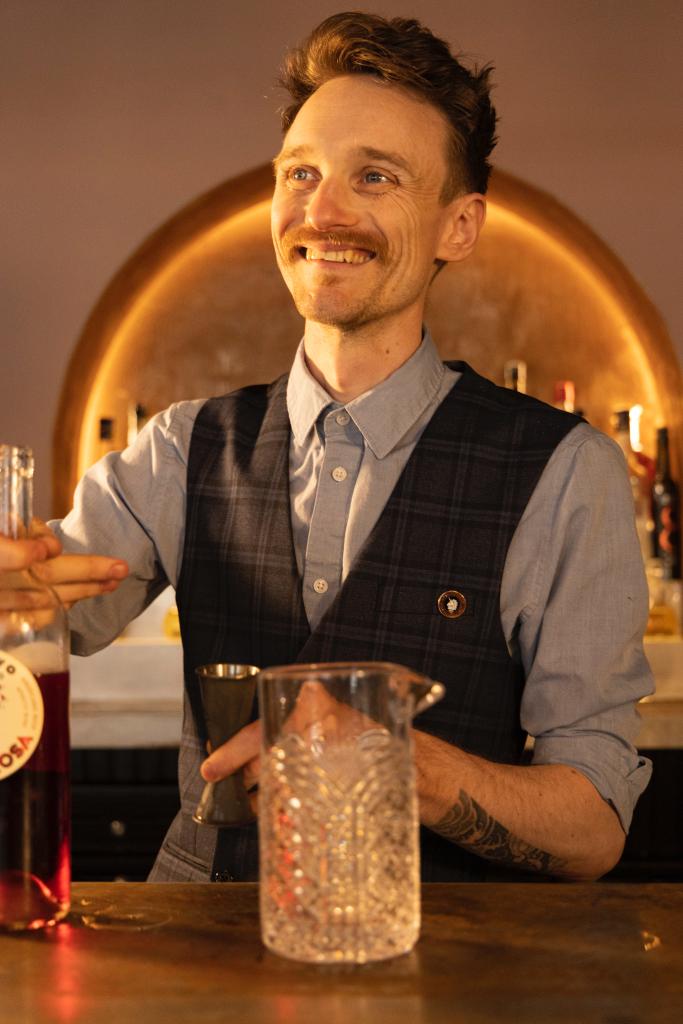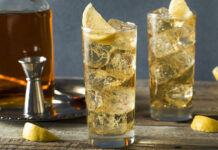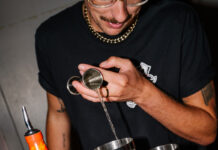 Perthshire’s Ewan Angus has travelled far and wide in search of cocktail nirvana, working as a journalist, bookbinder, booze-maker and teacher along the way. Now head bartender at Glasgow’s Gost, he is here to share some tales from our… Mixed Up World
Perthshire’s Ewan Angus has travelled far and wide in search of cocktail nirvana, working as a journalist, bookbinder, booze-maker and teacher along the way. Now head bartender at Glasgow’s Gost, he is here to share some tales from our… Mixed Up World
THE COCKTAIL is liquid folklore. Old stories are remade and retold all the time, and cocktails are no different.
There are thousands of cocktail books nowadays, from simple serves to molecular biology you can attempt in your kitchen, but the first cocktail book was a far cry from the Instagram friendly nonsense we see nowadays. Whilst authorship is disputed, the first cocktail book is attributed to Jerry Thomas, the first celebrity bartender. Prior to that cocktails were an oral tradition.
Thomas was the Salt Bae of his time, notorious for bigging up his endeavours, charming the punters, then fleeing when the money faltered. I imagine he didn’t really calculate the GP on his cocktails. It’s believed at some point that, again to make a quick buck, he wrote down most of his concoctions, leading to the Bon Vivant’s Companion, or How to mix drinks.
Drinkslinger Thomas was renowned for his showmanship. One of his drinks was the infamous Blue Blazer. Made in the same way you “throw” a Bloody Mary between two shakers, Thomas would light his whisky and pour it between two cups, creating a river of fire. Whilst this would look cool, nowadays the sensitive fire alarms required to open a bar render this one an insurance hazard.

The book itself is available periodically from small press companies, and whilst few of the drinks are appealing, some of them are wild enough to be intriguing. The first cocktail, created long before Jerry got behind a bar, was the punch bowl. Dump booze, a bit of juice and a bit of fruit in a bowl, garnish with a ladle and boom, instant good time. There’s the flip, spirit + egg, nowadays simplified into the sour.
The writing down of the recipes led to the idea of the bartender as a job and not just as a service. This way of making drinks about flavour and aesthetic was the birth of cocktail culture. There’s no negroni without punch, no Manhattan without the blue blazer, no martini without the Martinez.
Thomas was one of the first to compile drinks, from punches, to flips, to the first attempts at highballs and the original “cocktail”. It was from here that the evolution of drinks can be traced from. Sure, there were other attempts at cocktails before this but it’s from here we have that amazing wonky line to today. The constant changing and updating of cocktails has led us from the martini to the Manhattan, from the flip to the sour, and each one changes with every bar, leading to an infinite number of possible drinks. Shaken mostly, Thomas also mentions briefly stirring drinks, or in some cases, just cutting them with cold water.
Looking at a cocktail book, the first thing you see are the wild recipes. Measurements have gone a long way from Thomas’ day. Originally using cups, jiggers and ponys, measurements that are far too big for the svelte nature of modern drinks. Nowadays, the bulk of drinks are a variation on a simple classic. The Martini, Manhattan, and the old fashioned are all a double shot of spirit, 50ml by the British standard with the addition of 10ml of a modifier, be it vermouth or syrup, to either sweeten or dry the drink out. The negroni, the quintessential bartender’s cocktail, takes the shape of 25ml gin, 25ml vermouth and 25ml Campari.
Learning the basic form of a drink is like learning chords or the basic moves in a martial art, vital but changeable once you know how. Cocktail books these days make it all seem flawless and exquisite, with a lot of unnecessary editing thrown in. Ultimately, you want a drink that looks good on arrival, tastes good and makes you happy.
Before the advent of the cocktail book, cocktails were an oral tradition and the written word immortalised them in the same way that we’ve immortalised morals through different creatures and deities. That the drinks have survived and been repurposed, then reinvented over and over is testament to the folklore of the cocktail.



















